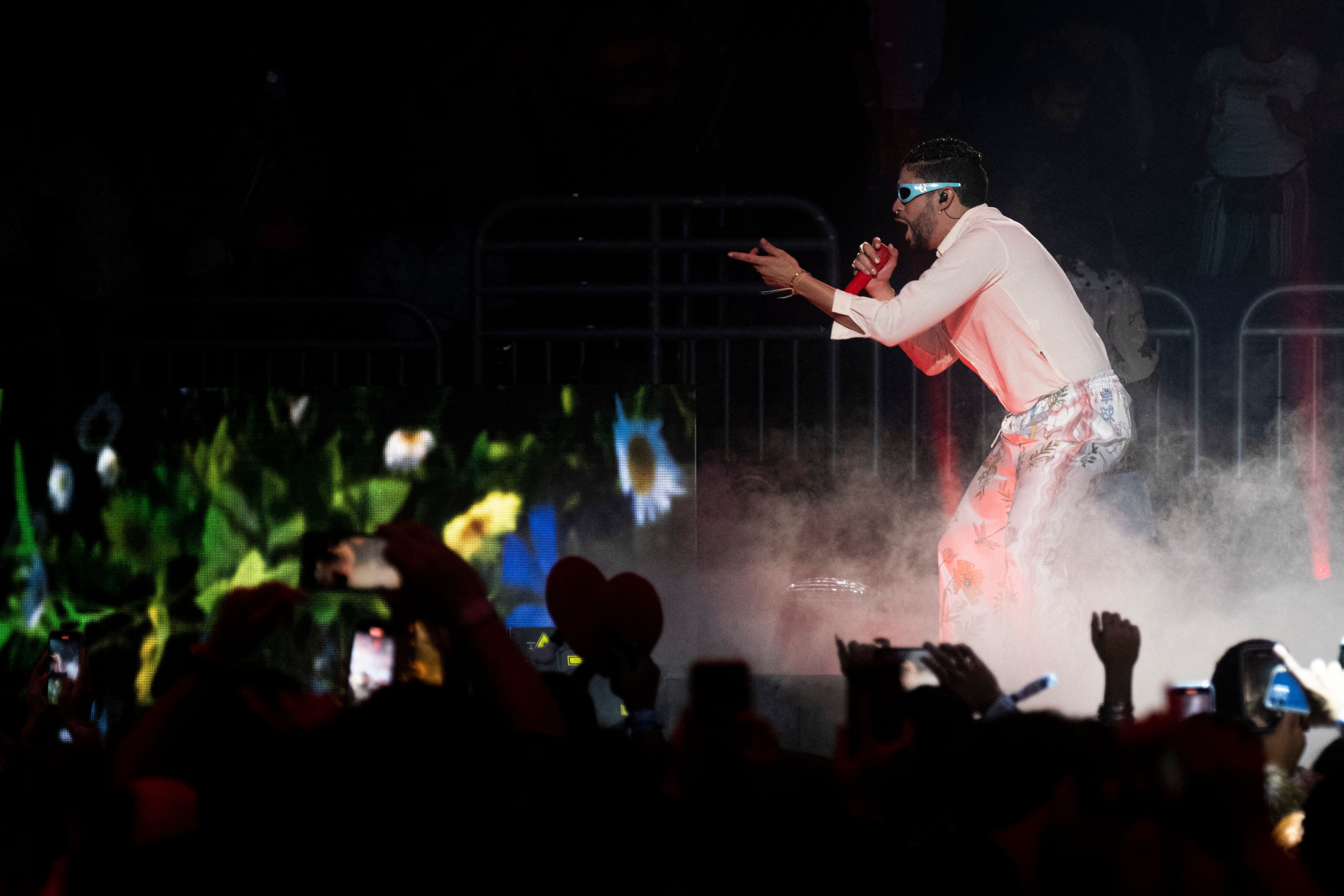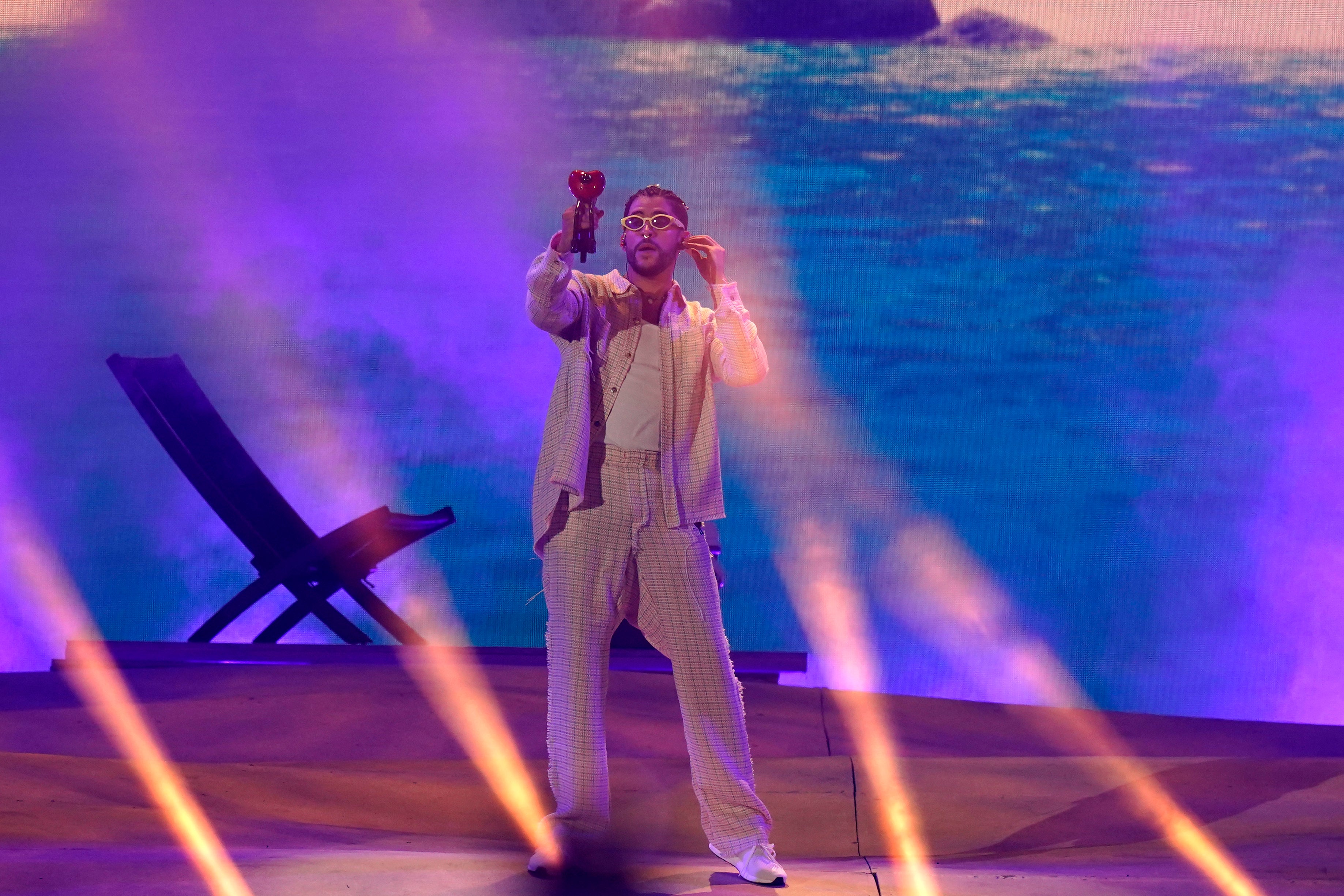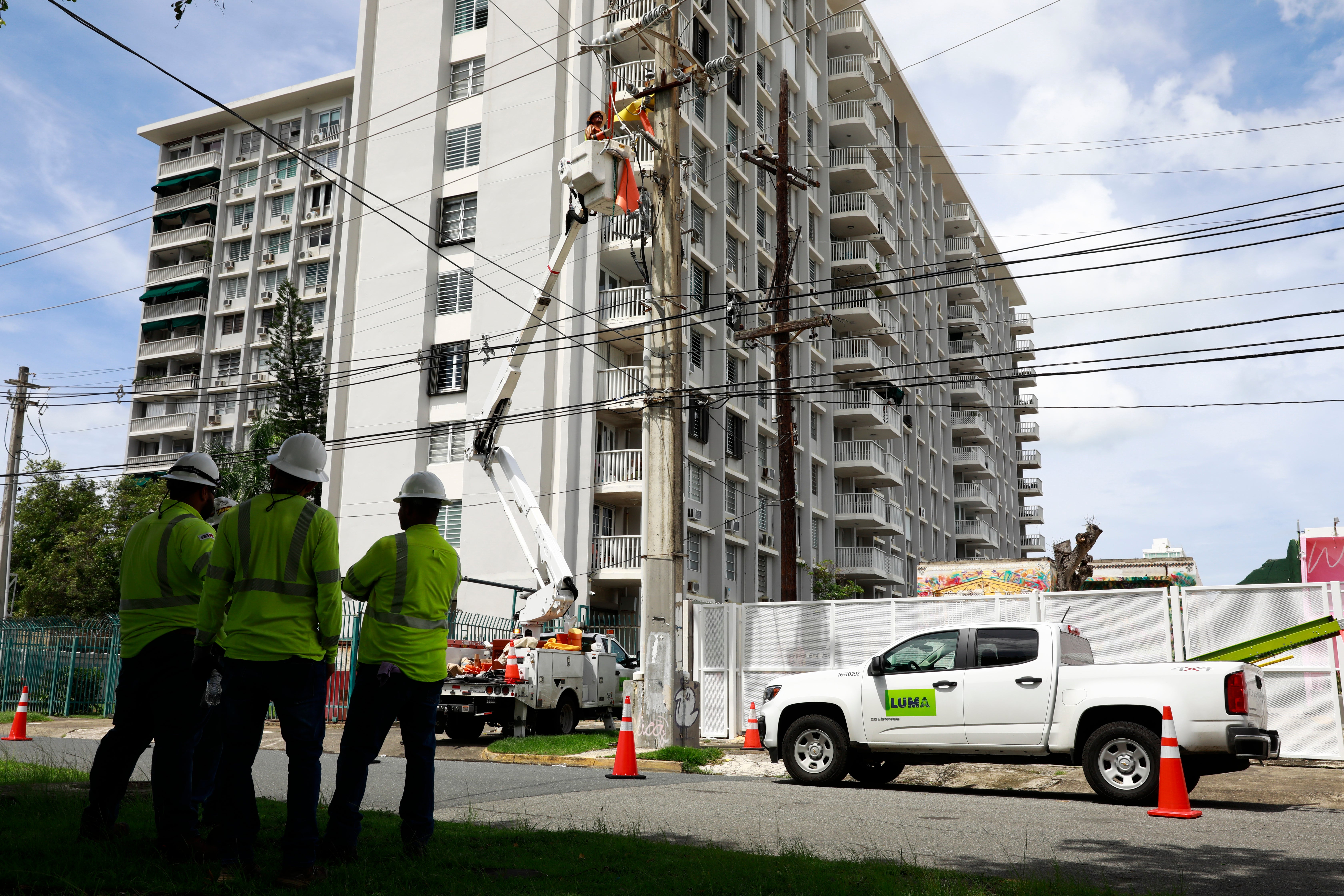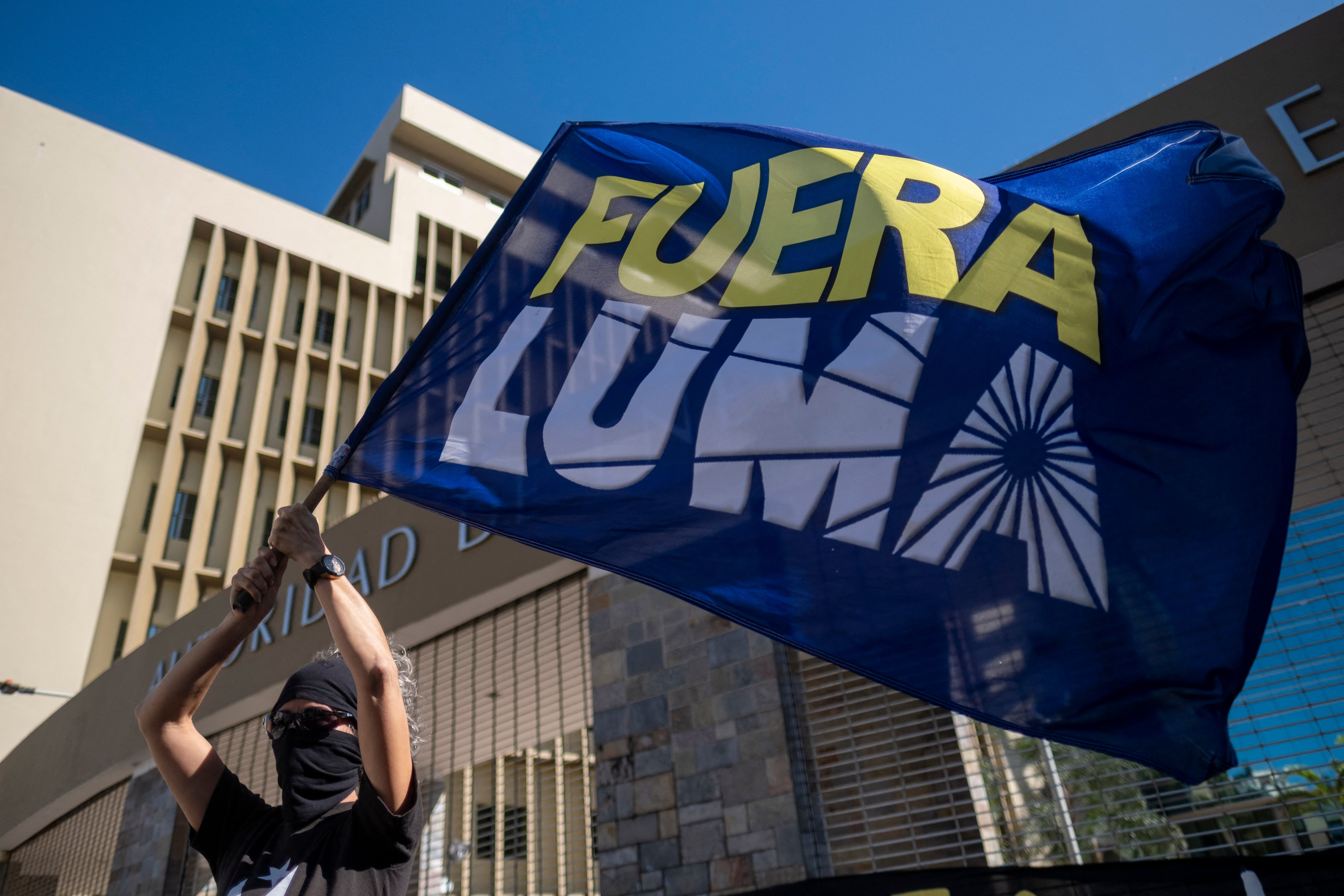How Bad Bunny is highlighting Puerto Rico's blackouts – and the long dark colonial history behind them
The reggaeton star has a new number one album — and a message for the world about Puerto Rico, Josh Marcus writes


History has a way of repeating itself in Puerto Rico.
On Sunday, 22 September, Hurricane Fiona struck the US territory, knocking out power for nearly the entire island, almost exactly five years after Hurricane Maria left Puerto Rico’s 1.5m customers without electricity for a week. As of this Thursday, a million people are without power.
Then, as now, the people of Puerto Rico are rallying and organising against a government and a set of business interests that has often failed to deliver equality and prosperity to the island’s 3.1m people, whether through a reliable electric grid, or affordable housing.
“We have to organize ourselves, because when those below move, those above come tumbling down,” a community activist based in San Juan’s Puerta de Tierra said in a recent document.
Then, as now, one of the island’s most beloved native sons is helping bring worldwide attention to their struggle: Benito Martinez Ocasio, better known as reggaeton superstar Bad Bunny.
Bad Bunny has always been an outspoken activist about Puerto Rico in addition to being a chart-topping artist. The first words of his 2018 TV debut on the Tonight Show were not a song, but an indictment of the Trump administration’s lackadaisical response to Maria.
What’s different now is the artist’s reach. He’s got a new number one album, Un Verano Sin Ti (A Summer Without You) on the Billboard 200 charts, but the stratospheric success hasn’t dulled his edge a bit. In fact, it has sharpened it.

The new visual for his song “El Apagón” (The Blackout), released less than a week before Fiona hit, is both a music video and a documentary, transforming into a full-blown indictment of the last 120 years of Puerto Rican history.
The song is a full-throated love letter to what Bad Bunny loves about Puerto Rico: its indigenous Taíno history, its world-conquering musicians, its women.
Midway through, in a jarring transition, he says, “Damn, another blackout,” and the video shows fragments of a documentary about inequality in Puerto Rico.
The track closes with the lines, in “I don’t want to leave here. They’re the ones who should leave…This is my beach. This is my sun. This is my land. This is who I am.”
The rest of the clip, which has been viewed more than 6m times, is dedicated to journalist Bianca Graulau’s film, Aquí Vive Gente (People Live Here), about the intertwined histories of gentrification, environmental damage, and foreign conquest in modern Puerto Rico. It makes that argument that rapacious business interests have rolled over the island just as powerfully as extreme weather in recent years, with each cycle of destruction reinforcing the other.
In the film, she speaks with residents of Puerta de Tierra, a working class area outside Old San Juan that was once home to enslaved people, and now sees their descendants being pushed out by new landlords, who’ve bought up nearly the entire neighborhood under Puerto Rico’s generous tax incentives to foreign business people.
Under the controversial 2012 law known as Act 22, foreign businesspeople can receive exemption from taxes on passive income like stocks and crypto if they invest in local residential property. For critics, the act ushered in a new form of colonialism on the island, which the US largely turned over to big sugar interests after taking control of Puerto Rico in 1898 following the Spanish-American War.

The law was a windfall for rich investors, especially those who swooped in after Hurricane Maria caused $90bn in damages to the island, even as Puerto Rico struggled through a larger financial crisis.
In March, the territory formally exited bankruptcy after a grueling seven-year, $70bn debt crisis.
Puerto Rico, a quasi-colony, does not have a vote in the US Congress and its citizens don’t vote in federal elections, but in 2016 the Obama administration signed a law into place known as PROMESA, through which an unelected board of leaders controls Puerto Rico’s finances and holds a virtual veto over the decisions of its leaders. Throughout the debt crisis, the Puerto Rican government has been forced into a strict austerity programme, and its government has closed schools and housing projects.
It’s a pattern, another Puerta de Tierra resident tells Ms Graulau, that will mean, “We’ll be foreigners in our own land.”
These clashes have been even more pointed on the island’s gorgeous beaches, which are public property under law, but have increasingly become the playground of foreign elites and stars like YouTuber Logan Paul, who decamped to the island in 2021.
In Rincón, demonstrators demolished part of a new development in July, which was planning to put an infinity pool on public land just feet away from the sea. “Party protests” have sprung up across the island, with demonstrators joyfully exercising their right to Puerto Rico’s famous beaches. The slogan, “Las playas son del pueblo,” the beaches belong to the people, is a rallying cry.
“This feels personal because I’ve been coming to this beach all my life,” Alaihia Lloret a student at the University of Puerto Rico who had been camping on the Rincón beach in protest, told The Guardian. “Once I saw what was happening, I knew I had to take it upon myself to protest.”
Elsewhere, in Dorado, as Aquí Vive Gente points out, private developments like the one where Mr Paul lives have effectively cut off public access to public beaches.
Researchers have also found that the development of remote beach sites often harms Afro- and indigenous descended people in Puerto Rico, particularly pointedly, because these groups settled the rural sites back when they were considered undesirable or too tough for society’s more favoured classes.
In other words, when a Bad Bunny song says, “This is my beach. This is my sun. This is my land,” it’s not just a party anthem claiming to own the city. It’s a call to action, because who genuinely has access to the beach, to the sun, to the land — these are live questions in Puerto Rico.
This same dynamic, where foreign investors have a large, controversial impact on Puerto Rican life, can be found in the island’s electric grid.

In 2021, a US-Canadian consortium called LUMA took over the island’s electric grid from the bankrupt Puerto Rico Electric Power Authority (PREPA), with promises that privitisation would bring better electric services to an island plagued by blackouts.
In fact, the opposite has occurred. The outages have gotten worse under the company, including an April blackout that left almost all of the island without power for days, giving flashbacks to Maria, when 2,975 people died, many of them not from the storm but from a lack of power in the days that followed. Electricity rates have been hiked seven times in 2022.
The company has said it inherited a broken and aging grid from PREPA and Hurricane Maria, and that it’s doing its best under the circumstances.
Activists want the governor of Puerto Rico to cancel the LUMA contract before a 30 November deadline, at which point $1.5bn in penalties could apply if the territory reneges on the 15-year contract.
Governor Pedro Pierluisi himself has threatened the contract.
“I’ve asked for significant changes. It remains to be seen what changes they make. As I said, I am not satisfied with the performance, and I will go further. LUMA is not going to have my support as governor unless the changes I have asked for happen. It is as simple as that. They are not going to have my support unless I see the changes,” the governor said in August.
Some, like a coalition known as Queremos Sol (We Want Sun), argue Puerto Rico needs to invest more in renewables, with all but a small percentage of its energy coming from imported fossil fuels.
As a result of the strain, protests have taken place across the island against LUMA—and on stage with Bad Bunny.
In August, he performed a historic three-day run at El Choli, San Juan’s largest indoor arena, which was broadcast across the island.
He told the 18,000-strong crowd, in Spanish, “We have a government over us that messes up our lives day in and day out,” and said LUMA could “go to hell.”
There, as the island and the world watched on, he continued to reinforce his messages.
“The country belongs to us. The country belongs to us,” he said. “We are the ones who have control.”
Join our commenting forum
Join thought-provoking conversations, follow other Independent readers and see their replies
Comments
Bookmark popover
Removed from bookmarks